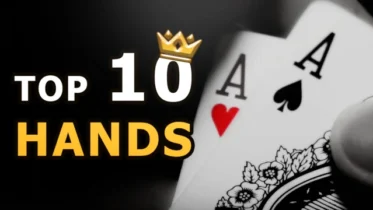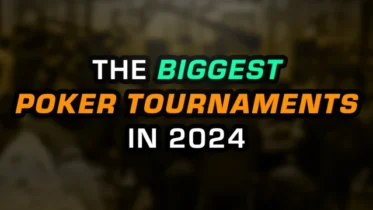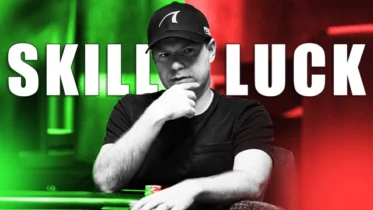In todays articles, I want to discuss unintuitive situations for check-raise bluffs when defending from the big blind. It is no myth that players under check-raise, which stems from the inability to identify these unintuitive 3-bet bluffing hands. Today we will discuss some of these hands and properties they possess. Incorporating these hands into your check-raise bluffing strategy will make you unpredictable and tougher to play against.
Rainbow Flops With An Ace
The flop I want to look at today is A72 rainbow when defending from the big blind versus an early to middle position open. This is an interesting board to look at because the early position player should c-bet 100% of his range. This is a very difficult board for players to check-raise naturally because of the lack of available draws. We do have some strong hands like A7s, A2s, 22, 77, AQ, AJ, AKo that we flatted pre. The only real intuitive bluffs we have are 34s, 54s and 53s that have backdoor flush draws. We are going to discuss the properties of check-raising some hands like 2x and 7x and the properties that we want to look for in check-raising these hands.
When we have an opponent range betting a flop such as A72, they will have a lot of suited broadways and connectors and mid to weak pocket pairs that we can begin to put pressure on. Check-raising hands like 23s, 24s 25s, 76s, 75s, 74s have some very unique properties that make out check-raising outperform calling in most instances. First, I want to point out we are not check-raising hands like K7 Q7, instead going for 76 and 75. This is because of our kicker in the hand, when we check raise K7, our opponent will fold hands like KQ, KJ, KT etc. We don’t want those hands to fold and instead would rather call and hope a K comes to spike 2 pair against the opponents range. Second, When a K comes on the turn, this is a VERY good card for the UTG range and not for the big blind. By flatting K7, we have some stronger 2 pairs that we can make on these disadvantageous cards for us. The opposite holds true on the 3-6 cards, when a 3,4,5 or 6 comes on the turn these are already very good cards for the big blind and the UTG player almost never improves on those cards. This de-values the 2 pair with these hands since UTG will already play passively against us on these cards.
Playing For Protection
The next important property or benefit from check-raising these 2/7x hands (mostly with a back door flush draw) is for protection. When we check-raise the 76s, hands like JTs, KQs, QTs will fold (or be making a mistake if they do not fold). We can get valuable protection from lots of over cards which is important with these particular hands.
Now, what do we do when our opponent calls our check-raise? I would range our opponent on a lot of Ax, pairs 88-KK, and possibly some KQs, strong back door hands. Any card 6 or below is a really good card for our range. These cards are also unlikely to improve the UTG players range. So my plan would be to fire large, polar bets on most cards 2 thru 7, especially the cards that do not bring a back door flush draw. On the broadway cards I would be doing a lot of giving up since these are great cards for the UTG range. I would especially give up the 2x hands, these hands do not block the value range of UTG since UTG shouldn’t have 22 or A2s. However, 7x hands block A7s and 77 that UTG may have so I would definitely continue bluffing with some of these hands. This is of course balanced with our value range of 77,22,A7 and A2.
High, Mid-Low Boards
On high Mid Low boards (like A72) when your opponent is using a range betting strategy, it is important to find these unorthodox check-raises. This will make you much tougher to play against and raise the EV of your overall strategy. Its ok to bluff with pairs or to raise for protection. Most players under bluff (or in this case check raise) because they never bluff when they have a pair in their hand and instead just check and play passively.



